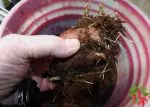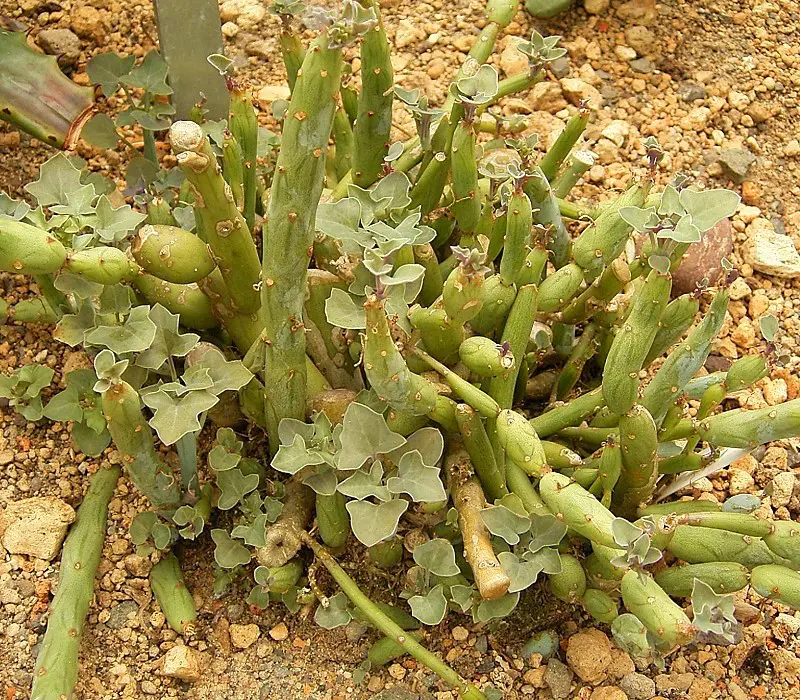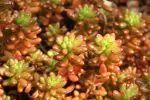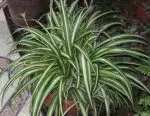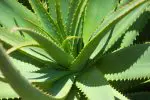This post contains affiliate links. If you buy something from one of our links we may earn a commission. Thanks
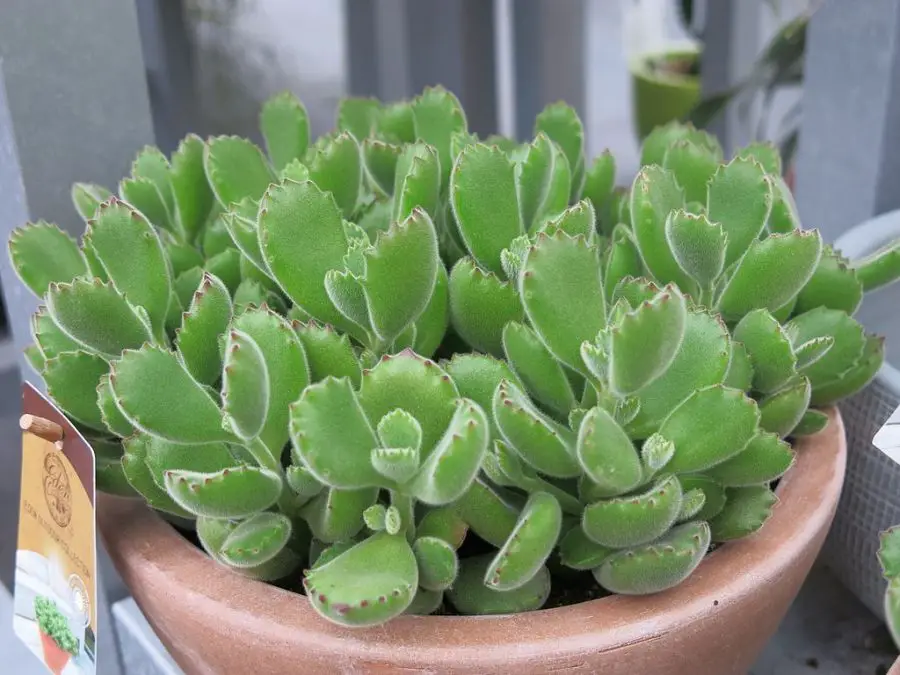
Discover the joy of growing Cotyledon tomentosa indoors with our comprehensive guide on Bear Paw succulent care, covering all you need for a thriving plant.
Bear Paw succulent or Cotyledon tomentosa care involves well-draining soil, moderate watering, and bright, indirect light. Water the plant when the top inch of the soil is dry and avoid overwatering to prevent root rot. This succulent thrives in a room with plenty of indirect sunlight and can tolerate some direct rays.
Welcome to the world of Bear Paw succulent care! You’ve brought home a charming Cotyledon tomentosa, known for its fuzzy, paw-like leaves and adorable appearance.
As you embark on this exciting journey, our comprehensive guide will help you provide the best care for your Bear Paw succulent plant, ensuring it thrives and brightens up your indoor space.
So, let’s dive in and discover the secrets to growing a happy and healthy Bear Paw succulent indoors!
Introduction-Bear Paw Succulent Care Indoors
Welcome, fellow succulent lover! In this comprehensive guide, we’ll explore the ins and outs of Bear Paw succulent care indoors.
Cotyledon tomentosa, with its unique, fuzzy leaves that resemble the paws of a bear, has undoubtedly captured your heart.
But how do you ensure it flourishes in an indoor environment? We’ll cover everything from potting and lighting to watering and propagation, helping you become an expert in nurturing your Bear Paw succulent.
So, let’s get started and transform your indoor space into a haven for these adorable plants!
A Glimpse into Cotyledon Tomentosa
Cotyledon tomentosa, a native of South Africa, belongs to the Crassulaceae family.
This evergreen shrub is popularly known by the common name the Bear Paw succulent, thanks to its fuzzy, paw-like leaves.
Sporting chunky green leaves with prominent “teeth” at their tips and orange bell-shaped flowers, this adorable tropical plant has captured the hearts of many indoor gardeners.
Why Proper Bear Paw Succulent Care Matters
Taking good care of your Bear Paw succulent is essential for its overall health and growth.
A well-tended plant will not only look more appealing but also live a longer, happier life.
By providing the right environment, you’ll be able to enjoy the unique beauty this charming succulent brings to your indoor space.
Plus, the more you know about Bear Paw succulent care, the better equipped you’ll be to tackle any potential issues that may arise, ensuring your plant thrives for years to come.
Indoor Benefits Of Bear Paw Succulent Care
Ah, the joys of bringing a Bear Paw succulent indoors!
Not only do these captivating plants add a touch of charm to your home, but they also offer a range of benefits that make them perfect for indoor living.
In this section, we’ll discuss how your Bear Paw succulent can improve air quality, boost your mood with its aesthetic appeal, and delight you with its low-maintenance nature.
So, let’s dive in and uncover the many reasons why a Bear Paw succulent is the ideal addition to your indoor garden!
Breathing Easy with Air Purification
One of the fantastic benefits of having a Bear Paw succulent indoors is its ability to purify the air.
Like many other plants, it absorbs pollutants and releases fresh oxygen, helping to create a cleaner and healthier environment in your home.
So, while you’re admiring your Bear Paw’s cute appearance, it’s silently working to improve your air quality.
Brightening Spaces with Aesthetic Appeal
There’s no denying the unique charm of a Bear Paw succulent.
Its fuzzy, paw-like leaves and bright orange flowers add a touch of whimsy and cheer to any space.
As an indoor plant, it’s a fantastic conversation starter and a lovely way to introduce some natural beauty into your home.
With a Bear Paw succulent gracing your room, you’ll find yourself smiling every time you glance its way.
The Joy of Low Maintenance
One of the best things about Bear Paw succulents is their low-maintenance nature.
This new plant won’t require constant attention or a green thumb to thrive indoors.
With just a few basic care steps, like proper watering, lighting, and occasional fertilizing, your Bear Paw will grow happily without demanding too much of your time.
This makes it an ideal choice for busy plant lovers or those just starting on their indoor gardening journey.
Bear Paw Plant Size
When it comes to Bear Paw succulents, their size is just as charming as their appearance.
In this section, we’ll take a closer look at the typical dimensions of these delightful plants and how they can fit seamlessly into your indoor space.
Whether you have a cozy apartment or a spacious home, understanding the size of your Bear Paw succulent will help you find the perfect spot for it to thrive.
So, let’s explore what you can expect in terms of size and how to make the most of it in your indoor garden!
A Peek at Height and Width
Bear Paw succulents, known for their compact size, usually grow up to 70 cm (28 inches) tall, with a similar width.
This manageable size makes them ideal for various indoor spaces, from windowsills and shelves to tabletops and desks.
As your Bear Paw grows, it maintains a well-balanced shape that adds to its overall appeal without taking up too much space.
Subspecies Size Variations
There are two recognized subspecies of Cotyledon tomentosa: subsp. tomentosa and subsp. ladismithiensis.
While both share similarities, they differ in size and appearance.
The autonymous subsp. tomentosa is generally larger and more branched, while subsp. ladismithiensis tends to be smaller and less branched, with long cylindrical leaves that usually lack teeth.
By understanding these differences, you can choose the right Bear Paw subspecies to suit your indoor space and personal preferences.
Bear Paw Succulent Care Indoor
Embarking on your Bear Paw succulent care journey might seem a little daunting at first, but we’re here to help!
In this section, we’ll walk you through the essentials of caring for your Cotyledon tomentosa indoors, from providing the right environment to addressing any potential challenges.
With our guidance, you’ll be well-equipped to nurture your Bear Paw succulent and enjoy its delightful presence in your home.
So, let’s dive in and learn how to keep your indoor Bear Paw succulent happy, and healthy!
Essential Care Guidelines
To keep your Bear Paw succulent thriving, there are a few general care guidelines to follow.
• First, ensure it has well-draining soil, as succulents don’t enjoy sitting in wet conditions.
• Next, provide ample light – ideally, a bright spot near a window with some direct sunlight.
• Water your Bear Paw succulent sparingly, allowing the soil to dry out between waterings, and be extra cautious during its winter dormancy.
• Lastly, maintain a consistent temperature and humidity level, avoiding extreme fluctuations.
Tailoring Bear Paw Succulent Care for Indoors
While Bear Paw succulents naturally grow in the rocky quartz fields of South Africa, they can adapt well to indoor environments with a little care.
To recreate their natural habitat, choose a well-draining potting mix and ensure your pot has drainage holes.
Position your plant near a bright window, but be cautious of the intense afternoon sun, which could scorch the leaves.
As indoor air tends to be drier, consider using a humidity tray or a pebble tray filled with water to increase humidity levels around your Bear Paw succulent.
By tailoring your care approach, you can help your indoor Bear Paw succulent flourish.
Soil and Pots (Coco Coir and Perlite: The Only Soil Mix You Ever Need)
When it comes to Bear Paw succulent care, getting the soil and pot just right is crucial for success.
In this section, we’ll introduce you to the perfect soil mix for your indoor Bear Paw: a blend of coco coir and perlite.
We’ll also discuss the importance of choosing the right pot for your beloved plant. With the ideal soil and pot combination, you’ll create a nurturing environment where your Bear Paw succulent can truly thrive.
So, let’s dive in and learn how to set the foundation for a flourishing indoor Bear Paw!
Picking the Perfect Soil
Selecting the right soil for your Bear Paw succulent is essential for its growth and overall health.
A well-draining soil mix, such as a blend of coco coir and perlite, allows water to flow through easily, preventing root rot and other moisture-related issues.
This mix also provides adequate aeration, promoting healthy root development.
Emphasizing Drainage
Proper drainage is vital for Bear Paw succulents, as they are prone to root rot if left sitting in soggy soil.
Ensuring your soil mix drains well is the first step to providing adequate drainage.
Additionally, choose a pot with drainage holes, which will allow excess water to escape and prevent your plant from sitting in standing water.
Coco Coir’s Superpowers
Coco coir, a natural byproduct of coconut husks, brings multiple benefits to your Bear Paw succulent.
It promotes healthy root growth, retains moisture without becoming waterlogged, and resists compaction, which helps maintain aeration for your plant’s roots.
Coco coir also has a neutral pH, making it an ideal choice for succulents like the Bear Paw.
Selecting the Ideal Pot
Choosing the right pot for your Bear Paw succulent is crucial for its well-being.
Opt for a pot with drainage holes to prevent water buildup, and consider using a porous material like terracotta, which helps wick away excess moisture.
Make sure the pot is the right size for your plant, providing enough room for growth without being too large, as oversized pots can hold too much water and cause soil to remain damp for too long.
Selecting the Ideal Pot: Plastic, Terra Cotta, and Ceramic Pros and Cons
When choosing a pot for your Bear Paw succulent, it’s essential to consider the material, as each type has its pros and cons.
Here, we’ll discuss the advantages and disadvantages of plastic, terra cotta, and ceramic pots:
Plastic Pots
Pros:
Lightweight: Plastic pots are easy to handle and move around, making them ideal for rearranging or transporting your plants.
Affordable: Plastic pots are generally less expensive than terra cotta or ceramic pots.
Retains moisture: Plastic pots hold moisture longer, which can be beneficial for succulents in drier environments.
Cons:
Less breathable: Plastic pots don’t allow air and water to pass through the material, which may lead to root rot if not managed properly.
Durability: Plastic pots can become brittle and crack over time, especially when exposed to direct sunlight.
Terra Cotta Pots
Pros:
Breathable: Terra cotta pots are porous, allowing air and water to pass through, which helps prevent root rot and provides a healthy environment for your succulent.
Classic appearance: The natural earthy look of terra cotta pots adds a charming aesthetic to your indoor garden.
Cons:
Heavy: Terra cotta pots are heavier than plastic pots, making them more difficult to move.
Fragile: Terra cotta pots can break more easily than plastic or ceramic pots.
Dries out quickly: Due to their porous nature, terra cotta pots dry out faster, which may require more frequent watering.
Ceramic Pots
Pros:
Attractive designs: Ceramic pots come in various colors, patterns, and shapes, allowing for more personalization and style in your indoor garden.
Heavy and stable: Ceramic pots are generally heavier than plastic pots, providing stability and reducing the risk of your plant tipping over.
Cons:
Weight: Ceramic pots can be heavy, making them harder to move and transport.
Retains moisture: Like plastic pots, ceramic pots hold moisture longer, which may lead to overwatering if not managed properly.
Price: Ceramic pots can be more expensive than plastic or terra cotta pots.
Drainage hole: Some ceramic pots may not have a drainage hole.
When choosing a pot for your Bear Paw succulent, consider the pros and cons of each material and how they align with your specific needs, preferences, and environmental conditions.
Ensure that the pot has drainage holes to prevent overwatering and maintain your succulent’s overall health.
Light
When it comes to keeping your Bear Paw succulent happy and healthy, providing the right amount of light is key.
In this section, we’ll explore the ideal lighting conditions for your indoor Bear Paw succulent and offer tips on how to achieve the perfect balance.
With the right light, your Bear Paw will not only grow strong and vibrant but also showcase its beautiful colors and unique shape.
So, let’s shine some light on the subject and learn how to create the perfect environment for your adorable indoor succulent!
Striking the Light Balance
The ideal light conditions for your Bear Paw succulent include plenty of bright indirect sunlight with some hours of direct sunlight, preferably during the cooler morning hours.
Bear Paw succulents can tolerate some shade, but if they don’t get enough light may cause them to become leggy and lose their vibrant colors.
They need several hours of sunlight and at least 6 hours of bright indirect light to thrive.
On the other hand, too much direct sunlight, especially during hot afternoons, can lead to scorched leaves.
If you are using a south-facing window consider hanging a sheer curtain to help diffuse the sunlight.
Brightening Indoor Spaces
Providing adequate light indoors for your Bear Paw succulent may require some creativity.
The best way is to place your plant near a south or east-facing window, where it can receive a good amount of indirect bright light and some direct sunlight.
If natural light is limited in your space, consider using a grow light to supplement your indoor plant’s light needs.
By adjusting the duration and intensity of the grow light, you can create the perfect indoor lighting conditions to keep your Bear Paw succulent thriving.
Bear Paw Succulent Temperature and Humidity
Creating a comfortable environment for your Bear Paw succulent is crucial, and temperature and humidity play a significant role in its well-being.
This plant grows naturally in warm climates so in this section, we’ll discuss the ideal temperature and humidity conditions for your indoor Bear Paw succulent and offer helpful tips on how to maintain a stable environment.
By keeping your plant cozy and content, you’ll set the stage for healthy growth and an attractive appearance.
So, let’s explore the ins and outs of temperature and humidity for your beloved Bear Paw succulent!
Finding the Sweet Spot: Temperature Range
Bear Paw succulents prefer a temperature range between 60-80°F (15-27°C) for optimal growth.
It’s important to avoid exposing your Bear Paw plant to a low temperature below 41°F (5°C), as this can cause damage.
Maintain a consistent temperature for your Bear Paw succulent by keeping it away from drafts, heating vents, or air conditioning units that could cause sudden fluctuations.
Perfect Humidity for Bear Paws
Ideal humidity levels for Bear Paw succulents range from 40-50%.
While they can tolerate lower humidity levels, providing a comfortable environment can help your plant thrive.
Indoor spaces often have drier air, especially during winter months, so it’s essential to monitor humidity and make adjustments as needed.
Mastering Indoor Conditions
Maintaining proper indoor conditions for your Bear Paw succulent requires a bit of diligence.
To regulate temperature, place your plant in an area away from extreme temperature fluctuations.
For humidity, consider using a humidity tray, a pebble tray with water, or a humidifier to increase moisture levels in the air.
Regularly monitor temperature and humidity using a thermometer and hygrometer, making adjustments as needed to keep your Bear Paw succulent in its comfort zone.
Bear Paw Succulent Care Watering
 Watering your Bear Paw succulent might seem like a simple task, but getting it just right is essential for your plant’s overall health and well-being.
Watering your Bear Paw succulent might seem like a simple task, but getting it just right is essential for your plant’s overall health and well-being.
In this section, we’ll delve into the best watering practices for your indoor Bear Paw succulent, helping you avoid common pitfalls like overwatering or underwatering.
With our guidance, you’ll become a pro at keeping your Bear Paw succulent hydrated, and happy.
So, let’s dive in and discover the secrets to perfect Bear Paw succulent watering!
Finding the Rhythm: Watering Frequency
The frequency of watering your Bear Paw succulent depends on factors such as light, temperature, and humidity.
Generally, you should water your plant thoroughly when the soil is dry to the touch, which is typically every 2-3 weeks during the summer months.
Remember that it’s better to err on the side of underwatering rather than overwatering, as succulents can be more susceptible to root rot from excessive moisture.
Succulents store water in their thick leaves so they can survive in dry soil.
Decoding the Signs: Overwatering vs. Underwatering
Monitoring your Bear Paw succulent for signs of overwatering or underwatering is crucial.
Overwatered plants may exhibit yellowing leaves, mushy or translucent spots, and root rot.
Underwatered Bear Paw succulents might have wrinkled or shriveled leaves, stunted growth, or dropping leaves.
By keeping an eye on your plant’s appearance, you can quickly address any watering issues and adjust your routine as needed.
Navigating Dormancy: Watering Adjustments
During your Bear Paw succulent’s winter dormancy, it’s essential to reduce watering frequency.
The plant’s metabolism slows down, requiring less water to sustain itself.
Allow the soil to dry out completely between waterings and be cautious not to overwater, as this can lead to root rot.
By adjusting your watering schedule during dormancy, you’ll help keep your Bear Paw succulent healthy year-round.
Fertilizing Cotyledon Tomentosa
Although Bear Paw succulents are low-maintenance plants, providing the right nutrients through fertilization can help them flourish even more.
In this section, we’ll discuss the best practices for fertilizing your indoor Cotyledon tomentosa and share tips on selecting the perfect fertilizer to support its growth.
With the right nourishment, your Bear Paw succulent will reward you with vibrant colors, robust growth, and a stunning appearance.
Let’s learn how to give your Bear Paw the nutritional boost it needs to thrive!
Timing it Right: When to Fertilize
The best time to fertilize your Bear Paw succulent is during its active growth period, which typically occurs from spring through fall.
Fertilizing during this time will provide the essential nutrients your plant needs to develop strong roots, vibrant foliage, and beautiful flowers.
Picking the Perfect Nutrients: Choosing the Right Fertilizer
Selecting the right fertilizer for your Bear Paw succulent is crucial.
Choose a balanced, water-soluble fertilizer specifically designed for succulents, or opt for a low-nitrogen, high-phosphorus formula to promote healthy growth and blooming.
Always follow the manufacturer’s instructions regarding the recommended dilution rate.
Nourishing Your Plant: Fertilization Frequency
Fertilizing your Bear Paw succulent too often can lead to leggy growth and potential harm.
During the active growth period, fertilize your plant once every 4-6 weeks.
Be sure to reduce or stop fertilization during the winter dormancy period, as your plant’s metabolic processes slow down and it requires fewer nutrients.
By sticking to the proper fertilization schedule, you’ll keep your Bear Paw succulent healthy, and happy.
How to Propagate Bear Paw Succulent
Sharing the love for your Bear Paw succulent with friends and family can be a delightful experience, and propagating your plant is an easy and rewarding process.
In this section, we’ll guide you through the steps of propagating your Bear Paw succulent in several different ways, so you can spread the joy of these adorable plants to others or expand your own indoor garden.
With our helpful tips and tricks, you’ll soon have plenty of healthy Bear Paw succulent babies to share or keep for yourself.
Let’s dive into the world of propagating and watch your Bear Paw collection grow!
Seed Propagation
Seed propagation would be too slow for most succulent growers and they are not readily available online so you will need to wait until your plant flowers to harvest your own seeds.
The Simple Method: Leaf Cuttings
Propagating Bear Paw succulents with leaf propagation is an easy and popular method.
Gently twist a healthy leaf from the mother plant, ensuring it detaches cleanly at the base.
Allow the leaf to dry for a few days, forming a callus over the cut end.
Once callused, place the leaf on well-draining soil, keeping it in a bright, indirect light.
In a few weeks, you’ll notice roots and new plantlets emerging.
A Quick Alternative: Stem Cuttings
Another method to propagate your Bear Paw succulent is through stem cuttings.
Use a clean, sharp pair of scissors or a knife to cut a healthy stem, ideally 2-3 inches long.
Allow the cutting to dry and form a callus for a few days. Then, plant the callused end into a well-draining soil mix, keeping it in bright, indirect light.
Water sparingly until the cutting establishes roots and begins to show new growth.
Multiplying the Family: Division
Division is an excellent method for propagating Bear Paw succulents that have grown in clusters. It is the fastest and easiest way of succulent propagation.
Carefully remove the parent plant from its pot and gently separate the clusters from the main plant into individual plants, making sure each division has a healthy root system.
Replant the divisions into their own pots filled with well-draining soil. Water sparingly until the new plants establish themselves and begin to grow.
Maintenance and Pruning
Keeping your Bear Paw succulent looking its best involves some simple maintenance and occasional pruning.
In this section, we’ll explore the art of caring for your indoor Bear Paw succulent by sharing valuable tips on maintaining its appearance and promoting healthy growth.
Pruning not only enhances your plant’s aesthetic appeal but also helps prevent potential issues caused by overcrowding.
Let’s learn how to keep your Bear Paw succulent looking pristine and thriving with proper maintenance and pruning techniques!
Timing is Everything: When to Prune
The best time to prune your Bear Paw succulent is during its active growth phase, typically from spring to early fall.
Pruning during this period will encourage new, healthy growth and allow your plant to recover more quickly from any stress caused by the process.
Mastering the Art: Tips for Successful Pruning
To ensure successful pruning, always use clean, sharp tools to make precise cuts without damaging your Bear Paw succulent.
Focus on removing any overgrown, leggy, or overcrowded stems to promote better airflow and light penetration.
Be cautious not to over-prune, as this can stress your plant and hinder its growth.
Keeping it Fresh: Removing Dead or Damaged Leaves
Regularly inspect your Bear Paw succulent for dead or damaged leaves, as these can attract pests or lead to diseases.
Gently remove any affected leaves by hand or with a pair of tweezers, taking care not to damage the healthy parts of the plant.
By keeping your Bear Paw succulent free of dead or damaged leaves, you’ll maintain its overall health and appearance.
Repotting Cotyledon Tomentosa
Just like all living things, your Bear Paw succulent will continue to grow and might eventually outgrow its current home.
In this section, we’ll discuss the importance of repotting your Cotyledon tomentosa and guide you through the process step by step.
Repotting not only provides your Bear Paw succulent with more room to grow but also refreshes the soil, ensuring a healthy environment for your plant.
Let’s learn how to give your Bear Paw succulent a new, comfortable home where it can continue to thrive and flourish!
Picking the Right Moment: When to Repot
Knowing when to repot your Bear Paw succulent is crucial for its well-being.
A good rule of thumb is to repot every 2-3 years or when you notice the roots starting to outgrow the pot.
The best time to repot is during the active growth period, usually in spring or early summer, to minimize stress on the plant and allow it to recover quickly.
Room to Grow: Choosing the Right Pot Size
When selecting a new pot for your Bear Paw succulent, choose one that is 1-2 inches larger in diameter than the current pot.
Ensure the new pot has drainage holes to maintain proper soil moisture levels.
Remember, a pot that is too large can lead to excess moisture retention, while a pot that is too small can stunt the growth of your plant.
A Smooth Transition: Steps for Successful Repotting
Carefully remove your Bear Paw succulent from its current pot by gently squeezing the sides or tapping the bottom to loosen the root ball.
Inspect the roots for any signs of rot or damage, trimming away any unhealthy sections with clean, sharp tools.
Fill the new pot with a well-draining soil mix, such as a blend of coco coir and perlite, to provide the proper growing environment.
Place your Bear Paw succulent into the new pot, positioning it at the same depth it was in the previous pot.
Fill in the remaining space around the root ball with soil, gently pressing it down to ensure proper contact with the roots.
Water the plant lightly to help settle the soil and establish the roots in their new home. Allow the soil to dry before resuming your regular watering schedule.
Pests and Diseases
Even the most well-cared-for Bear Paw succulents can encounter the occasional pest or disease.
In this section, we’ll cover common issues that might affect your Cotyledon tomentosa and provide tips on how to prevent, identify, and treat these pesky problems.
Armed with this knowledge, you’ll be able to maintain a healthy and happy Bear Paw succulent by tackling any potential threats before they can cause significant harm.
Let’s dive into the world of plant protection and learn how to keep your Bear Paw succulent safe from pests and diseases!
Pesky Intruders: Common Pests and How to Deal with Them
Some common pests that may affect your Bear Paw succulent include mealybugs, spider mites, and aphids.
To prevent infestations, regularly inspect your plant and maintain a clean growing environment. If you spot any pests, act quickly by:
Isolating the affected plant to prevent the spread of pests.
Removing pests manually using a soft cloth, cotton swab, or tweezers.
Spraying your Bear Paw succulent with insecticidal soap or neem oil, following the product’s instructions.
Unwelcome Illnesses: Identifying and Treating Common Diseases
Bear Paw succulents can occasionally suffer from diseases, such as root rot and fungal infections. To identify and treat these issues, follow these steps:
Inspect your plant for signs of disease, including discolored, mushy, or wilting leaves, and foul-smelling roots.
If you suspect a disease, remove the affected plant parts using clean, sharp tools.
Treat fungal infections with a fungicide, following the product’s instructions.
To prevent future issues, maintain proper care practices, such as allowing the soil to dry between waterings and providing adequate airflow around your plant.
Bear Paw Problems – Bear Paw Succulent Leaves Falling Off
Every plant lover knows that sometimes things don’t go as planned, and our precious Bear Paw succulents are no exception.
If you’ve noticed your Bear Paw succulent leaves falling off, don’t worry! In this section, we’ll help you identify the possible causes and offer solutions to get your plant back on track.
From watering issues to environmental factors, we’ll explore various reasons behind leaf drop and guide you on how to address these challenges.
With the right care and attention, you’ll have your Bear Paw succulent looking its best in no time!
Investigating the Issue: Causes of Leaf Drop
There are several reasons why your Bear Paw succulent might be losing its leaves, including:
Overwatering or underwatering: Both can lead to leaf drop, as the plant struggles to maintain proper hydration.
Temperature fluctuations: Sudden changes in temperature can stress your plant, causing leaf loss.
Insufficient light: Lack of proper light can lead to weak, stretched growth and eventual leaf drop.
Solutions and Prevention: How to Address and Prevent Leaf Drop Issues
To prevent and address leaf drop in your Bear Paw succulent, consider the following steps:
Water properly: Allow the soil to dry out completely between waterings and avoid letting your plant sit in standing water.
Regulate temperature: Keep your Bear Paw succulent away from drafts, heaters, or air conditioning vents, and maintain a consistent temperature within its preferred range.
Provide adequate light: Ensure your plant receives enough bright, indirect light, and consider supplementing with a grow light if necessary.
By addressing these common causes of leaf drop, you’ll help your Bear Paw succulent maintain its beautiful, healthy foliage and enjoy a thriving indoor life.
Fungal Disease and Insect Pests Causing Leaf Drop
Fungal diseases and insect pests can also contribute to leaf drop in your Bear Paw succulent. Here’s how to identify and address these issues:
Fungal diseases: Root rot, usually caused by overwatering, can lead to leaf drop. To prevent and treat fungal diseases:
• Water your plant properly, allowing the soil to dry out between waterings.
• Improve drainage by using a well-draining soil mix and a pot with drainage holes.
• If you suspect a fungal infection, remove the affected plant parts and treat the plant with a fungicide, following the product’s instructions.
Insect pests
Pests like mealybugs, spider mites, and aphids can cause leaf drop by feeding on your Bear Paw succulent’s leaves and stems. To prevent and treat infestations:
• Regularly inspect your plant for pests and maintain a clean growing environment.
• If you spot pests, isolate the affected plant to prevent the spread of the infestation.
• Remove pests manually using a soft cloth, cotton swab, or tweezers.
• Spray your plant with insecticidal soap or neem oil, following the product’s instructions.
By addressing these issues, you’ll help your Bear Paw succulent recover from leaf drop caused by fungal diseases or insect pests, ensuring it stays healthy and attractive.
Cotyledon tomentosa FAQs
Taking care of a Bear Paw succulent, or Cotyledon tomentosa, is a delightful endeavor, but it comes with its own set of questions.
As this fuzzy-leafed succulent has gained popularity, many people wonder how to properly care for it, what type of soil to use, how often to water it, and what kind of lighting it needs.
With the right care, this unique plant can bring a lot of joy and visual interest to your space.
Below, we’ve addressed some commonly asked questions to help you on your journey.
Q: How often should I water my Bear Paw succulent?
A: Water the Bear Paw succulent when the top inch of the soil feels dry to the touch. Overwatering can lead to root rot.
Q: What type of soil is best for Bear Paw succulents?
A: Use well-draining soil, preferably a cactus or succulent mix, to ensure that the plant does not sit in waterlogged conditions.
Q: Do Bear Paw succulents need direct sunlight?
A: Bear Paw succulents prefer bright, indirect light. While they can tolerate some direct sunlight, too much can cause leaf scorching.
Q: Is it necessary to fertilize a Bear Paw succulent?
A: During the growing season, usually from spring to early fall, you can fertilize the plant once a month with a diluted, balanced fertilizer to encourage growth.
Bear Paw Succulent Care Final Thoughts
As we wrap up our guide to Bear Paw succulent care indoors, we hope you feel confident and inspired to keep your charming plant happy and healthy.
From proper watering and lighting to tackling pests and diseases, we’ve covered all the essential aspects of caring for your Bear Paw succulent.
Remember, every plant is unique, so always be attentive to its needs and adjust your care routine accordingly.
With a little love and attention, your Bear Paw succulent will reward you with its delightful appearance and make a beautiful addition to your indoor plant collection. Happy planting!
Key Takeaways: Recap of Essential Bear Paw Succulent Care Tips
 To ensure your Bear Paw succulent thrives indoors, let’s recap the key care tips we’ve discussed:
To ensure your Bear Paw succulent thrives indoors, let’s recap the key care tips we’ve discussed:
• Soil and drainage: Use a well-draining soil mix, like coco coir and perlite, and choose a pot with drainage holes.
• Light: Provide bright, indirect light for your plant.
• Temperature and humidity: Maintain a consistent temperature within the preferred range and monitor humidity levels.
• Watering: Allow the soil to dry out between waterings and adjust based on dormancy or active growth periods.
• Fertilizing: Choose the right fertilizer and apply it according to the recommended frequency.
• Propagation: Use leaf cuttings, stem cuttings, or division to propagate your plant.
• Maintenance and pruning: Prune your plant as needed to maintain its shape and health.
• Pest and disease control: Regularly inspect your plant and address any issues with pests or diseases promptly.
Enjoy the Experience: Growing a Healthy Bear Paw Succulent Indoors
As you apply these care tips, remember that the ultimate goal is to enjoy the experience of growing a healthy Bear Paw succulent indoors.
With proper care and attention, your plant will not only be a beautiful addition to your home but also a source of joy and satisfaction.
Embrace the journey of nurturing your Bear Paw succulent, and celebrate the unique charm it brings to your indoor garden. Happy growing!
Read more: 10 Benefits Of Succulent Plants Indoors Plus They’re Easy To Grow

















